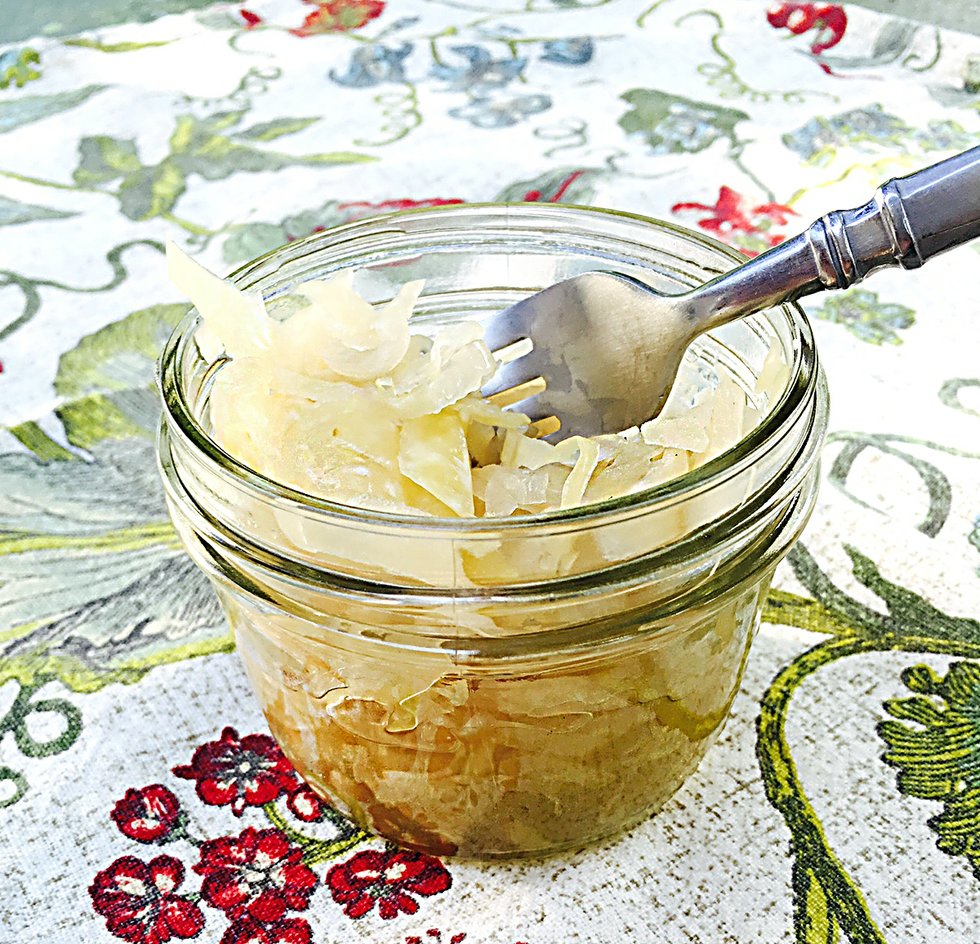
Fermentation has been a hot topic of late, but not because it’s new. This art of preserving and enhancing foods with “good” bacteria has been practiced for millenniums, long before anyone knew of probiotics and the microorganisms in your digestive track that contribute to good health. Ancient people associated eating fermented foods with good health, they just didn’t know why.
The fermenting process happens due to live bacteria or yeast transforming food into a funkier version of itself with a much longer shelf life. Though we often associate bacteria as a negative, these microbes are incredibly good for your tummy. Some familiar probiotic-rich foods are yogurt and sauerkraut. Lesser known, but worth adding to your repertoire, include kefir, kimchi, and kombucha.
Yogurt and kefir are very similar. Both begin as milk and contain those live active cultures that make them so healthy. To make yogurt, milk and live bacteria (known as a starter) are heated slowly to start the fermentation process happen. Kefir is made without heat, just milk and kefir “grains,” which actually are the healthy bacteria and yeast that ferment the milk. Kefir is said to contain at least three times the amount of probiotics as yogurt.
Sauerkraut and kimchi also are similar to each other. One might call kimchi the Korean cousin to sauerkraut. They both begin with cabbage, which soon will be abundant at the farmer’s markets. Kraut traditionally uses green or red cabbage; kimchi typically is made with napa cabbage (oblong head with wavy leaves) and/or bok choy.
The fermentation process of both kimchi and sauerkraut is known as lacto-fermentation, kick-started with salt (iodine-free) to draw out the naturally bearing lactic acid cultures. The salt pulls water out of the cabbage which becomes the brine. Once the cabbage begins to sweat, pack it into jars, cover with the brine, and over a few days the magic of fermentation happens. The microbes convert sugars into lactic acid, a natural preservative that inhibits the growth of harmful bacteria.
Sauerkraut can be as simple as cabbage, salt, and water. Kimchi is more complex, as its distinct taste comes not only from fermentation but also garlic, onions and Korean red pepper. You can add daikon radish, ginger, carrots, other spices and even pears to add another layer to its unique flavor that’s tangy, sweet, spicy, and alive.
Speaking of alive, last week I brought home my first scoby—the acronym for “symbiotic culture of bacteria and yeast”—which I’ll use to make the refreshing, fermented fizzy drink kombucha.
The scoby will sit in a small jar of tea, in the dark, for ten days. Then I’ll combine the scoby with a larger batch of tea and a little sugar, and let this sit in the dark to slowly ferment.
I recently attended a class home brewing kombucha, hosted by Slow Food Marathon County. I love kombucha and was fascinated by the process. You actually see and hold the live bacteria (the scoby). When kept in the right environment, the live cultures flourish and produce more live cultures that can be shared to produce new batches of kombucha.
Lacto-fermentation also is what occurs when pickling vegetables the traditional way. This process is different from the more commonly known heat-and-vinegar canning process, which doesn’t create those healthful probiotics. Look for recipes for “fermented” pickling.
Simple Sauerkraut
1 head cabbage
1 Tbsp. sea or kosher salt
Water as needed
Remove outer leaves if necessary and cut cabbage into quarters. Remove core. Before cutting, reserve one or two outer leaves and set aside. Shred the cabbage with a mandolin or slice thinly.
Place sliced cabbage in a large bowl, add salt, and massage cabbage almost like kneading bread. The cabbage will begin to change—almost like it’s wilting—as it releases water. Then let sit in bowl for up to one hour. Note: Use salt that’s free of iodine or anti-caking agents, which can hinder the fermentation process.
After one hour, have ready a very clean, large jar. Pack the shredded cabbage into the jar with liquid, until it’s about one inch from the top and completely covered with the brine. If needed, add water just to cover the cabbage.
Use the leaves that were set aside to keep the shredded cabbage pieces from floating to the top. Place the leaf on top in the jar like a blanket. It’s important that the shredded cabbage stays submerged. You could also place a smaller jar on top of cabbage to press them down.
Cover the jar with cheesecloth or coffee filter (or something breathable) and place in a location where it can sit at room temperature, out of sunlight. Let sit 5 days or up to 2 weeks as the fermentation process proceeds. Keep an eye on your jar. If a skin forms, simply remove skim it off. Store the final fermented product in the refrigerator.




